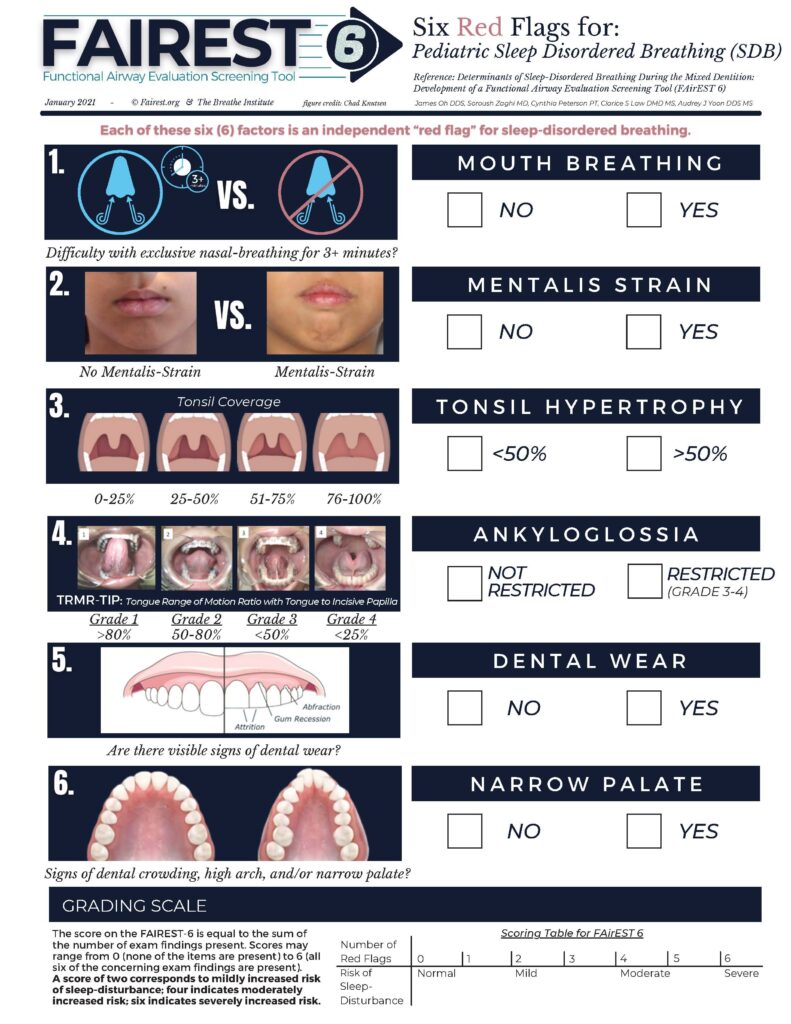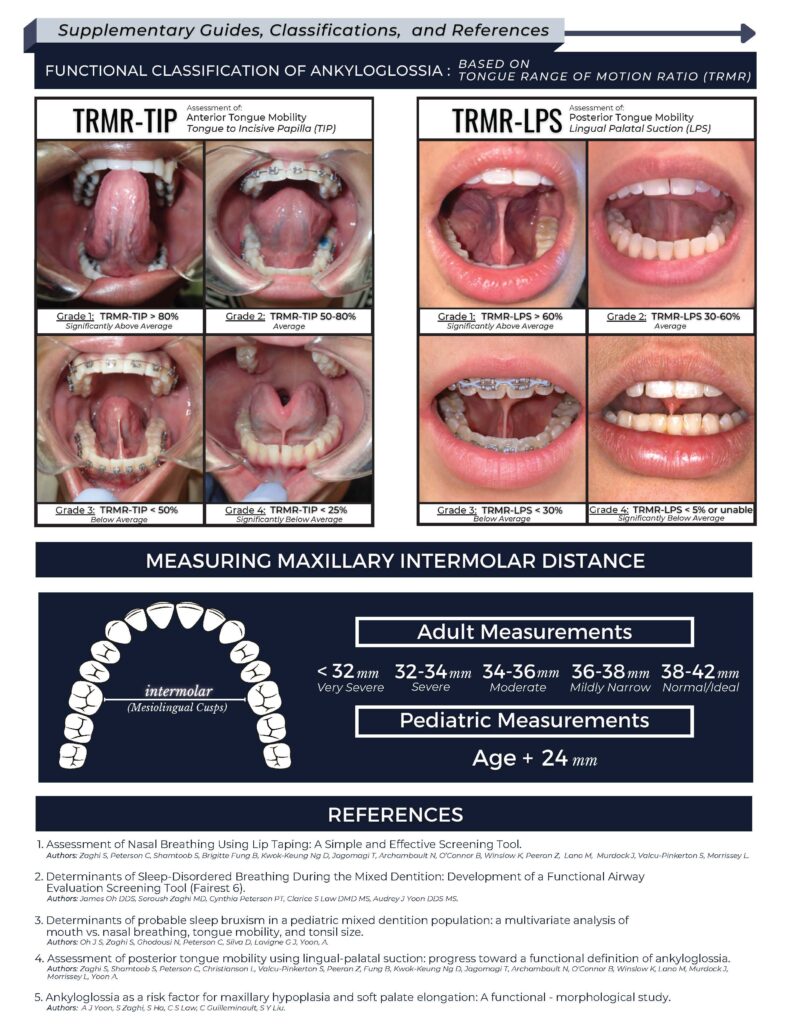FAIREST6 Assessment Tool
FairEST6 Assessment for Sleep-Disordered Breathing
The Six Red Flags Exam Findings for Pediatric Sleep-Disordered Breathing are a set of signs that may indicate a child is at risk for sleep-disordered breathing (SDB). These findings are evaluated utilizing the assessment tool known as the FairEST 6.
The 6 signs it evaluates are:
- Nasal Breathing - Being able to breathe through the nose comfortably for 3 minutes or more
- Mentalis Strain - being able to close the lips without straining the muscles of the chin
- Tonsil Size - enlarged tonsils make the upper airway smaller and create resistance to nasal breathing
- Tongue Tie - a tie restrits movement of the tongue and its ability to rest in the roof of the mouth
- Grinding or Bruxism - this is a sign of muscular dysfunction and tension within the mouth
- Narrow Palate - this creates difficulty for the tongue to rest due to inadequate space
FAIREST6 Assessment Tool
FairEST6 Assessment for Sleep-Disordered Breathing
The Six Red Flags Exam Findings for Pediatric Sleep-Disordered Breathing are a set of signs that may indicate a child is at risk for sleep-disordered breathing (SDB). These findings are evaluated utilizing the assessment tool known as the FairEST 6.
The 6 signs it evaluates are:
- Nasal Breathing - Being able to breathe through the nose comfortably for 3 minutes or more
- Mentalis Strain - being able to close the lips without straining the muscles of the chin
- Tonsil Size - enlarged tonsils make the upper airway smaller and create resistance to nasal breathing
- Tongue Tie - a tie restrits movement of the tongue and its ability to rest in the roof of the mouth
- Grinding or Bruxism - this is a sign of muscular dysfunction and tension within the mouth
- Narrow Palate - this creates difficulty for the tongue to rest due to inadequate space


IS YOUR CHILD AT RISK?
The presence of one or more of these red flags can help identify children who may be at risk for Sleep-Disordered Breathing (SDB) and who may benefit from further evaluation and treatment. If a child exhibits these red flags, a pediatric dentist or other healthcare professional may recommend therapy or treatment to correct these issues to alleviate problems.
Identifying these red flags can help healthcare professionals identify children who may benefit from further evaluation and treatment to improve their sleep and overall health.
